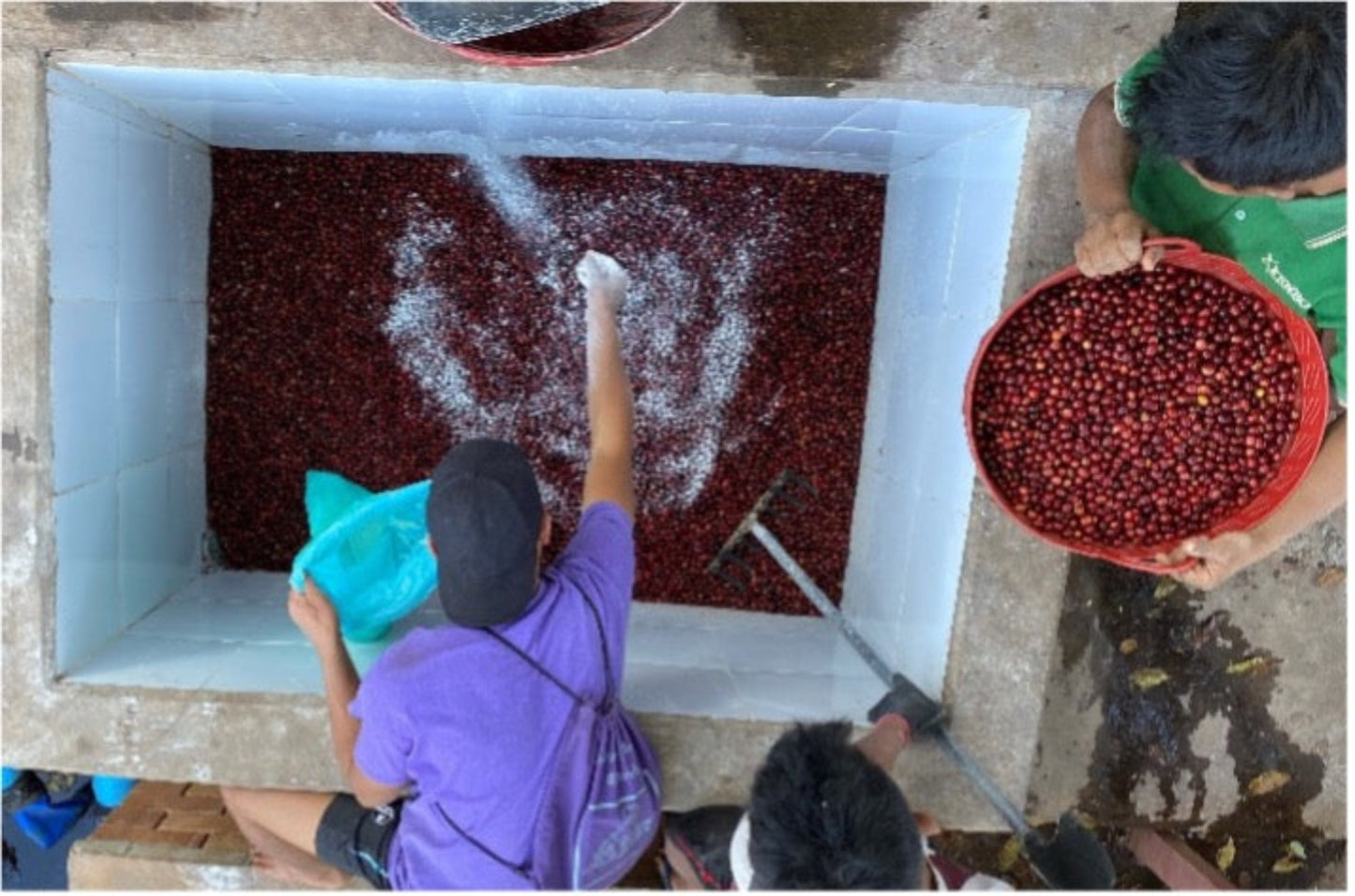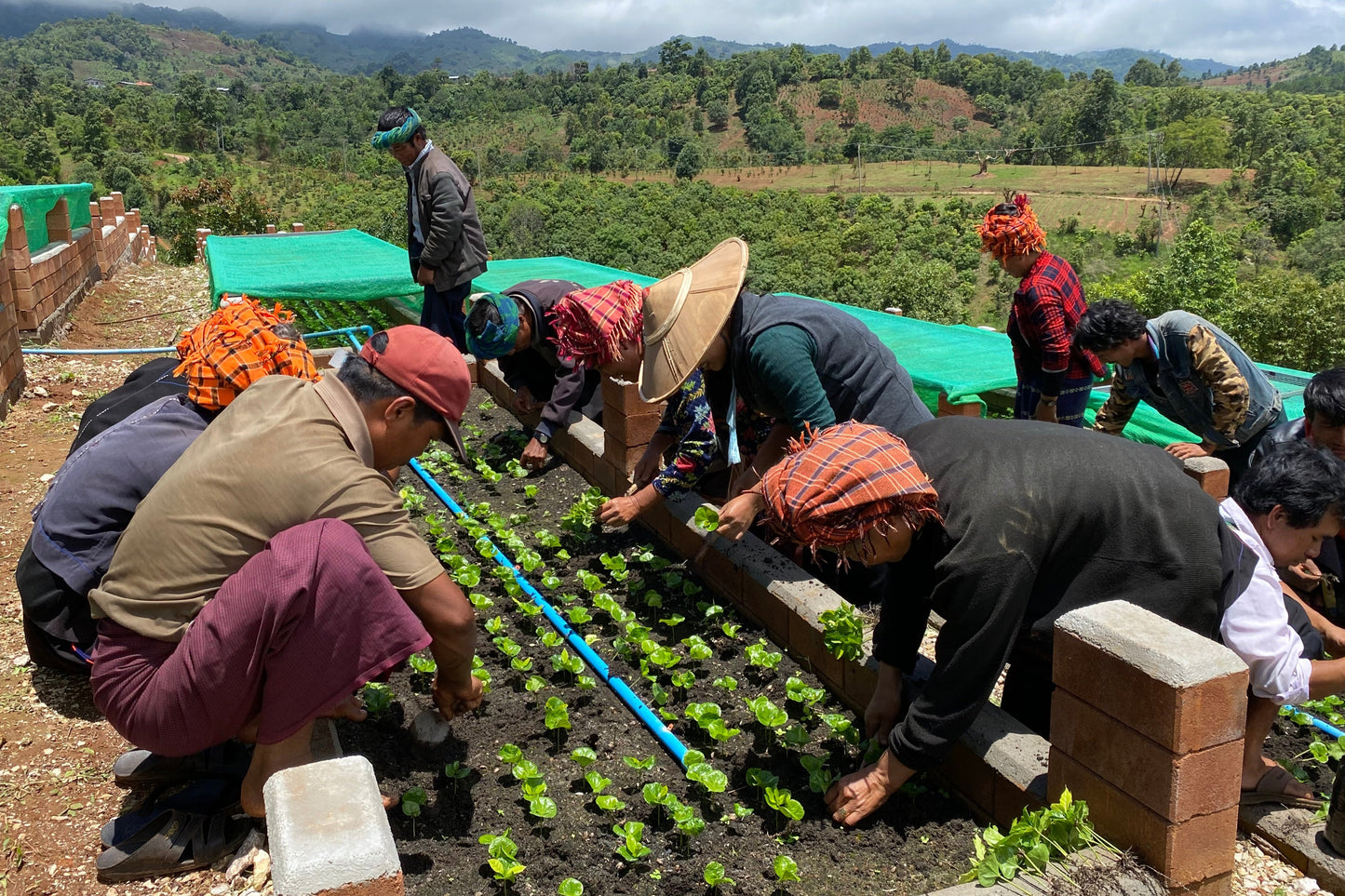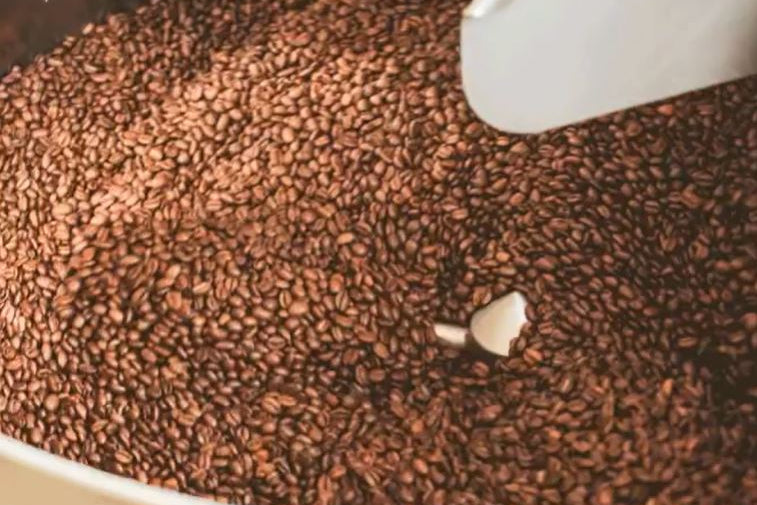ORIGIN SERIES: Guatemala
Origin Series delves into coffee growing regions around the world and turns you into a knowledgeable coffee snob.
Guatemala: A Land of Exceptional Coffee
Guatemala is renowned for producing some of the world’s most flavourful and complex coffees. With its diverse
microclimates, rich volcanic soil, and high altitudes, the country offers ideal conditions for growing high-quality Arabica coffee.
Filberto Pablo Pablo, a first-generation coffee grower in Huehuetenango, Guatemala, calls his farm “the saviour” after its spiritual roots. His family replanted the land and, for over 10 years, has lovingly cared for their coffee plants. They handpick ripe cherries, ferment, wash, and dry them, making coffee their life’s work.
Origin: Guatemala, Huehuetenango
Farmer: Filiberto Pablo Pablo
Variety: Caturra, Bourbon
Processing: Washed
Altitude:
Flavour notes: Lime, Marzipan, Plum
Recommended use: Filter
Discover more about Guatemala
Coffee was introduced to Guatemala in the mid-18th century by Jesuit missionaries, initially used merely as a decorative plant in monasteries. However, it wasn’t until the 19th century that coffee production took off as an economic powerhouse for the country. With the decline of Guatemala’s indigo and cochineal dye industries, coffee became the primary export crop. The government actively promoted coffee cultivation by offering land incentives and support to European settlers, leading to the development of large coffee estates. In the early 20th century, Guatemalan coffee growers started focusing on developing specialty coffee
Today, coffee remains a crucial component of Guatemala’s economy, providing jobs to thousands of farmers and workers across the country.
Coffee was introduced to Guatemala in the mid-18th century by Jesuit missionaries, initially used merely as a decorative plant in monasteries. However, it wasn’t until the 19th century that coffee production took off as an economic powerhouse for the country. With the decline of Guatemala’s indigo and cochineal dye industries, coffee became the primary export crop. The government actively promoted coffee cultivation by offering land incentives and support to European settlers, leading to the development of large coffee estates. In the early 20th century, Guatemalan coffee growers started focusing on developing specialty coffee
Today, coffee remains a crucial component of Guatemala’s economy, providing jobs to thousands of farmers and workers across the country.
Guatemala boasts several distinct coffee-growing regions, each offering unique flavor profiles. The most notable regions include:
- Antigua – Known for its balanced body, sweet, aromatic and well-balanced coffees, Antigua’s coffee benefits from volcanic soil and a stable climate.
- Huehuetenango – One of the highest and driest coffee-growing regions, producing bright, fruity coffees with a wine-like acidity.
- Atitlán – This region, near Lake Atitlán, is influenced by volcanic soil and lake breezes, resulting in coffees with floral and citrus notes.
- Cobán – A humid, rainforest-like climate contributes to the distinctively mild, fruity, and herbal flavours of Cobán’s coffee.
- Fraijanes Plateau – With a high altitude and frequent volcanic activity, this region yields full-bodied coffees with bright acidity.
- San Marcos – The warmest of Guatemala’s coffee regions, known for early harvests and lively, floral, and fruity coffees.
Guatemala boasts several distinct coffee-growing regions, each offering unique flavor profiles. The most notable regions include:
- Antigua – Known for its balanced body, sweet, aromatic and well-balanced coffees, Antigua’s coffee benefits from volcanic soil and a stable climate.
- Huehuetenango – One of the highest and driest coffee-growing regions, producing bright, fruity coffees with a wine-like acidity.
- Atitlán – This region, near Lake Atitlán, is influenced by volcanic soil and lake breezes, resulting in coffees with floral and citrus notes.
- Cobán – A humid, rainforest-like climate contributes to the distinctively mild, fruity, and herbal flavours of Cobán’s coffee.
- Fraijanes Plateau – With a high altitude and frequent volcanic activity, this region yields full-bodied coffees with bright acidity.
- San Marcos – The warmest of Guatemala’s coffee regions, known for early harvests and lively, floral, and fruity coffees.
Most coffee in Guatemala is grown on smallholder farms, though larger estates also play a role. Hand-picking of the ripe cherries is the norm, especially among specialty producers. The country’s high-altitude plantations (ranging from 1,200 to 2,000 meters above sea level) allow for slow bean maturation, enhancing complexity and sweetness. Farmers use traditional shade-grown methods, where coffee plants grow under the canopy of native trees – in fact, 98% of Guatemala’s coffee is shade-grown. This practice not only protects coffee from extreme temperatures but also promotes biodiversity and sustainable farming.
Most coffee in Guatemala is grown on smallholder farms, though larger estates also play a role. Hand-picking of the ripe cherries is the norm, especially among specialty producers. The country’s high-altitude plantations (ranging from 1,200 to 2,000 meters above sea level) allow for slow bean maturation, enhancing complexity and sweetness. Farmers use traditional shade-grown methods, where coffee plants grow under the canopy of native trees – in fact, 98% of Guatemala’s coffee is shade-grown. This practice not only protects coffee from extreme temperatures but also promotes biodiversity and sustainable farming.
Guatemala primarily grows Arabica coffee, and traditional varieties include Bourbon, Caturra, Catuai, Pache and Typica. 20% of Guatemalan coffee trees are also rust-resistant, through varieties such as Sarchimors and Catimors. More recently, new varieties have been introduced, such as Geisha, Pacamara, Maragogyoe and Maracaturra.
Each variety contributes to the country’s diverse flavour spectrum, ranging from rich and chocolatey to bright and floral.
Regarding processing methods, the washed (wet) process is the most common in Guatemala (98% of Guatemala’s coffee is washed-processed), where coffee cherries are depulped, fermented, washed, and then sun-dried. This method highlights the coffee’s acidity and clarity. Guatemala is the home of 3000 centralised wet mills and more than 15000 independent washing stations.
Natural and honey processing methods are still rare, yet growing in popularity. Some regions, particularly Huehuetenango, have started experimenting with processing methods, adding more fruit-forward flavours and body to the cup.
Guatemala primarily grows Arabica coffee, and traditional varieties include Bourbon, Caturra, Catuai, Pache and Typica. 20% of Guatemalan coffee trees are also rust-resistant, through varieties such as Sarchimors and Catimors. More recently, new varieties have been introduced, such as Geisha, Pacamara, Maragogyoe and Maracaturra.
Each variety contributes to the country’s diverse flavour spectrum, ranging from rich and chocolatey to bright and floral.
Regarding processing methods, the washed (wet) process is the most common in Guatemala (98% of Guatemala’s coffee is washed-processed), where coffee cherries are depulped, fermented, washed, and then sun-dried. This method highlights the coffee’s acidity and clarity. Guatemala is the home of 3000 centralised wet mills and more than 15000 independent washing stations.
Natural and honey processing methods are still rare, yet growing in popularity. Some regions, particularly Huehuetenango, have started experimenting with processing methods, adding more fruit-forward flavours and body to the cup.
Guatemalan coffee is prized for its bright acidity, full body, and rich flavours. Depending on the region, notes of chocolate, caramel, citrus, floral, and stone fruit can be detected. Coffees from Antigua tend to be chocolatey and nutty, while those from Huehuetenango often exhibit fruity and wine-like characteristics. The country’s coffee consistently ranks among the best in the world due to its dynamic flavours and balanced cup profiles.
Guatemalan coffee is prized for its bright acidity, full body, and rich flavours. Depending on the region, notes of chocolate, caramel, citrus, floral, and stone fruit can be detected. Coffees from Antigua tend to be chocolatey and nutty, while those from Huehuetenango often exhibit fruity and wine-like characteristics. The country’s coffee consistently ranks among the best in the world due to its dynamic flavours and balanced cup profiles.
- Coffee is Guatemala’s largest agricultural export, contributing significantly to the country’s economy.
- The country’s high altitudes and volcanic soil make it one of the premier locations for growing specialty coffee.
- Many Guatemalan coffee farms are family-owned, with generations of farmers passing down traditional cultivation techniques.
- The National Coffee Association of Guatemala (Anacafé) plays a crucial role in supporting and promoting Guatemalan coffee worldwide.
- Guatemala was one of the first Latin American countries to focus on specialty coffee, paving the way for global recognition.
- Coffee is Guatemala’s largest agricultural export, contributing significantly to the country’s economy.
- The country’s high altitudes and volcanic soil make it one of the premier locations for growing specialty coffee.
- Many Guatemalan coffee farms are family-owned, with generations of farmers passing down traditional cultivation techniques.
- The National Coffee Association of Guatemala (Anacafé) plays a crucial role in supporting and promoting Guatemalan coffee worldwide.
- Guatemala was one of the first Latin American countries to focus on specialty coffee, paving the way for global recognition.
From the blog
Read the label is a series that breaks down the lingo & helps you choose the coffee that's right for...
ORIGIN SERIES: MYANMAR
We journey to the misty highlands of Myanmar, a Southeast Asian country whose specialty coffee scene is still emerging but...
Blend vs Single origins: what's the difference?
Blends bring balance. Singles bring character. Discover how both fit into your coffee routine — and why neither one has...







